Here at the 60-Game mark I've taken a look at some of the yin and
yang of the league, the leaders and the losers, the power hitters and
the fundamentalists, this and that. The stuff that makes the ATL world
go 'round.
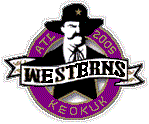
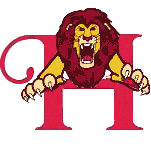
For
instance, I noticed Keokuk and San Francisco have finally lifted their
bats over that infamous Mendoza Line, the Westerns clock in at an ATL
low with a team batting average of .213. The Seals aren't far ahead at
.221, but for both it's an improvement over what they were 30 games
ago. On the obverse we have Havana still leading the league, but in
synchronistic fashion we find that they have dropped below that magic
Hall of Fame Line, .300, and are now sitting atop the heap with a .292
team batting average. Just as Keokuk has had San Fran, Havana has
Newark. Newark rides shotgun with Havana, toting a .284 team batting
average -- 19 points ahead of the closest rivals (Homestead &
Cincinnati). Havana still has the only qualifying .400 hitter,
Alejandro Oms, who has started that inevitable slide downwards since
coming back
from injury. He sits exactly at the .400 mark at this writing, but has
been as high as the .440's. The entire starting Havana lineup is at or
above .300 except for Tony Perez, who has 'dropped' to .294. But to see
how fragile the Havana team is, one has only to note that during Oms'
injury the Leones were 4-13 and fell out of first place in the South
Division and are 5 1/2 games back of Cincinnati. On the
other side, Keokuk doesn't have a regular who can hit .275 -- Turkey
Stearnes can only put claim to .274 at this point, and he is there
alone on that team. Even still, Keokuk is but three games back of
Toronto in the North Division, and the Seals lead their Union League
Pacific Division by three games. If you ever needed an example to prove
hitting is not the most important aspect of baseball -- this is it.
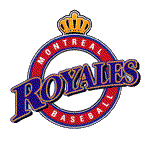

My
eye wanders a bit, and then is caught by that unmistakeable glitter of
power, the home run. Montreal has the right royale mark of 100 long
balls to lead the ATL by a full 20. That ain't no joke when you lead
the league in any category by a full 20%, and having it be that most
noticeable of all stats is indeed something that deserves closer
attention. Yes, a lot has to be laid at the doorstep of Parc Jarry,
where 3.7 HR per Game are hit, 1.6 by the Visitor. But even though the
wind has been kind to the longballers in Montreal, let us not take away
from this monumental feat by not giving the batters their due. Reggie
Jackson leads the lineup and is second in the Legends League with 19
taters. He also
probably leads the league in trade offers, but he's not going anywhere
just yet. Mike Schmidt follows him with 15 homers, then Mike Piazza
with 14, Alex Rodriguez with 12 and Joe Gordon (who's just been put on
The Block) at 10. Mark McGwire had 16 home runs for Montreal before he
was traded away to Toronto, and the rest of the club totals out with
14. But to have a true measure of how this towers over the rest of the
league, let's take a gander at the other end of the spectrum where we
find the Nationals of Washington with 33 total dingers for the team.
The Big Hurt, Frank Thomas, has 10 homers for Washington. Nobody else
on the team rises above 4. Of course Griffith Stadium has held them
back in this department, but like Parc Jarry not all the blame can be
laid on one factor. In fact, Griffith is not the last in the ATL in HR
per Park; Forbes Field has that distinction and is followed by League
Park, then Griffith. Hmm, we should also mention that both Montreal and
Washington are in last place of their respective divisions. Once again
an example that an expertise in hitting, or lack of it, this time home
runs, is not a prerequisite for winning the division.
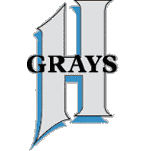

Enough
of that, one can only gorge on long ball deserts for so long before it
turns
into a monotonous boredom. Homestead makes it exciting by leading the
ATL in stolen bases, with 71. Cool Papa Bell leads the Grays and the
Legends league, with 34 swipes in 46 attempts. He's not alone, however,
and Willie Wells comes in second on the team, and third in the Legends
League with 15 thefts in 22 tries. Homesteader Sammy Hughes comes in
with 8 for 9 in the larceny department, and there are 10 other Grays
with at least one stolen base. In perfect bookending fashion the White
Sox of Chicago peer across the
great divide at Homestead's 71 SB with 17 of their own. ChiSoxer Dick
Lundy leads his club with 8. The Pale Hose
show the other cheek in base thefts in more ways than one. They don't
believe others should be swiping them either. Led by Roy Campanella and
his able backup Ray Schalk, the Sox have thrown out 31 of 51
baserunners, and picked another 6 off base. They are easily the best in
the entire ATL at this aspect, and while the Homestead crowd is not
exactly at the far opposite end, they are in the lower bottom third
with 19 caught from 57 attempts. We will note here that the White Sox
are indeed in first place in their Union League Continental Division,
while the Grays are in third place of the Legends League South Division.


Excitement
comes in many forms, and nobody can deny some of the most exciting
plays are defensive in nature: the outfield assist and the doubleplay
being two in point. I can say I am surprised at the low frequency of
double plays in this league so far. At 60 games the team double plays
range from a low of 24 for Washington, to a high of 46 for the New York
Mets. The ATL average is 39, which seems to me to be quite low
considering all the excellent keystone combos in this league. Perhaps
it is the exceptional baserunning skills the players in this league
also display, or perhaps it is just a statistical anomoly that will
work itself out over the course of the season. That other defensive gem, the long arm of the
outfielder snatching victory out of defeat is indeed one of the most
exciting plays in baseball. Joltin' Joe DiMaggio of the San Francisco
Seals leads all outfielders with 9 assists -- which is as much or more
than several teams have with all their outfielders combined. You would
think opponents would have learned by now not to run on DiMaggio. The
Seals lead the ATL with 26 outfield assists. Contrast that with Tokyo,
the low team, with 5 assists, the league average of 12 assists, and
Orix, the second place team, with 18. Eleven of those Seals assists,
however, were made by outfielders since traded away. We will see if the
Seals can remain on top in this category on the strength of Joe
DiMaggio's arm. As well, we will see if they can remain in the lead of
the Union League Pacific Division, and whether or not the Mets can make
up ground from their second place vantage point in the Legends League
East Division.
That concludes the first part of this series, in the next I'll take a
look at pitching, which is the indefinable central half of the main 90%
of the game . . . or something like that.
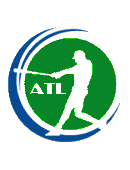


 For
instance, I noticed Keokuk and San Francisco have finally lifted their
bats over that infamous Mendoza Line, the Westerns clock in at an ATL
low with a team batting average of .213. The Seals aren't far ahead at
.221, but for both it's an improvement over what they were 30 games
ago. On the obverse we have Havana still leading the league, but in
synchronistic fashion we find that they have dropped below that magic
Hall of Fame Line, .300, and are now sitting atop the heap with a .292
team batting average. Just as Keokuk has had San Fran, Havana has
Newark. Newark rides shotgun with Havana, toting a .284 team batting
average -- 19 points ahead of the closest rivals (Homestead &
Cincinnati). Havana still has the only qualifying .400 hitter,
Alejandro Oms, who has started that inevitable slide downwards since
coming back
from injury. He sits exactly at the .400 mark at this writing, but has
been as high as the .440's. The entire starting Havana lineup is at or
above .300 except for Tony Perez, who has 'dropped' to .294. But to see
how fragile the Havana team is, one has only to note that during Oms'
injury the Leones were 4-13 and fell out of first place in the South
Division and are 5 1/2 games back of Cincinnati. On the
other side, Keokuk doesn't have a regular who can hit .275 -- Turkey
Stearnes can only put claim to .274 at this point, and he is there
alone on that team. Even still, Keokuk is but three games back of
Toronto in the North Division, and the Seals lead their Union League
Pacific Division by three games. If you ever needed an example to prove
hitting is not the most important aspect of baseball -- this is it.
For
instance, I noticed Keokuk and San Francisco have finally lifted their
bats over that infamous Mendoza Line, the Westerns clock in at an ATL
low with a team batting average of .213. The Seals aren't far ahead at
.221, but for both it's an improvement over what they were 30 games
ago. On the obverse we have Havana still leading the league, but in
synchronistic fashion we find that they have dropped below that magic
Hall of Fame Line, .300, and are now sitting atop the heap with a .292
team batting average. Just as Keokuk has had San Fran, Havana has
Newark. Newark rides shotgun with Havana, toting a .284 team batting
average -- 19 points ahead of the closest rivals (Homestead &
Cincinnati). Havana still has the only qualifying .400 hitter,
Alejandro Oms, who has started that inevitable slide downwards since
coming back
from injury. He sits exactly at the .400 mark at this writing, but has
been as high as the .440's. The entire starting Havana lineup is at or
above .300 except for Tony Perez, who has 'dropped' to .294. But to see
how fragile the Havana team is, one has only to note that during Oms'
injury the Leones were 4-13 and fell out of first place in the South
Division and are 5 1/2 games back of Cincinnati. On the
other side, Keokuk doesn't have a regular who can hit .275 -- Turkey
Stearnes can only put claim to .274 at this point, and he is there
alone on that team. Even still, Keokuk is but three games back of
Toronto in the North Division, and the Seals lead their Union League
Pacific Division by three games. If you ever needed an example to prove
hitting is not the most important aspect of baseball -- this is it.
 My
eye wanders a bit, and then is caught by that unmistakeable glitter of
power, the home run. Montreal has the right royale mark of 100 long
balls to lead the ATL by a full 20. That ain't no joke when you lead
the league in any category by a full 20%, and having it be that most
noticeable of all stats is indeed something that deserves closer
attention. Yes, a lot has to be laid at the doorstep of Parc Jarry,
where 3.7 HR per Game are hit, 1.6 by the Visitor. But even though the
wind has been kind to the longballers in Montreal, let us not take away
from this monumental feat by not giving the batters their due. Reggie
Jackson leads the lineup and is second in the Legends League with 19
taters. He also
probably leads the league in trade offers, but he's not going anywhere
just yet. Mike Schmidt follows him with 15 homers, then Mike Piazza
with 14, Alex Rodriguez with 12 and Joe Gordon (who's just been put on
The Block) at 10. Mark McGwire had 16 home runs for Montreal before he
was traded away to Toronto, and the rest of the club totals out with
14. But to have a true measure of how this towers over the rest of the
league, let's take a gander at the other end of the spectrum where we
find the Nationals of Washington with 33 total dingers for the team.
The Big Hurt, Frank Thomas, has 10 homers for Washington. Nobody else
on the team rises above 4. Of course Griffith Stadium has held them
back in this department, but like Parc Jarry not all the blame can be
laid on one factor. In fact, Griffith is not the last in the ATL in HR
per Park; Forbes Field has that distinction and is followed by League
Park, then Griffith. Hmm, we should also mention that both Montreal and
Washington are in last place of their respective divisions. Once again
an example that an expertise in hitting, or lack of it, this time home
runs, is not a prerequisite for winning the division.
My
eye wanders a bit, and then is caught by that unmistakeable glitter of
power, the home run. Montreal has the right royale mark of 100 long
balls to lead the ATL by a full 20. That ain't no joke when you lead
the league in any category by a full 20%, and having it be that most
noticeable of all stats is indeed something that deserves closer
attention. Yes, a lot has to be laid at the doorstep of Parc Jarry,
where 3.7 HR per Game are hit, 1.6 by the Visitor. But even though the
wind has been kind to the longballers in Montreal, let us not take away
from this monumental feat by not giving the batters their due. Reggie
Jackson leads the lineup and is second in the Legends League with 19
taters. He also
probably leads the league in trade offers, but he's not going anywhere
just yet. Mike Schmidt follows him with 15 homers, then Mike Piazza
with 14, Alex Rodriguez with 12 and Joe Gordon (who's just been put on
The Block) at 10. Mark McGwire had 16 home runs for Montreal before he
was traded away to Toronto, and the rest of the club totals out with
14. But to have a true measure of how this towers over the rest of the
league, let's take a gander at the other end of the spectrum where we
find the Nationals of Washington with 33 total dingers for the team.
The Big Hurt, Frank Thomas, has 10 homers for Washington. Nobody else
on the team rises above 4. Of course Griffith Stadium has held them
back in this department, but like Parc Jarry not all the blame can be
laid on one factor. In fact, Griffith is not the last in the ATL in HR
per Park; Forbes Field has that distinction and is followed by League
Park, then Griffith. Hmm, we should also mention that both Montreal and
Washington are in last place of their respective divisions. Once again
an example that an expertise in hitting, or lack of it, this time home
runs, is not a prerequisite for winning the division.
 Enough
of that, one can only gorge on long ball deserts for so long before it
turns
into a monotonous boredom. Homestead makes it exciting by leading the
ATL in stolen bases, with 71. Cool Papa Bell leads the Grays and the
Legends league, with 34 swipes in 46 attempts. He's not alone, however,
and Willie Wells comes in second on the team, and third in the Legends
League with 15 thefts in 22 tries. Homesteader Sammy Hughes comes in
with 8 for 9 in the larceny department, and there are 10 other Grays
with at least one stolen base. In perfect bookending fashion the White
Sox of Chicago peer across the
great divide at Homestead's 71 SB with 17 of their own. ChiSoxer Dick
Lundy leads his club with 8. The Pale Hose
show the other cheek in base thefts in more ways than one. They don't
believe others should be swiping them either. Led by Roy Campanella and
his able backup Ray Schalk, the Sox have thrown out 31 of 51
baserunners, and picked another 6 off base. They are easily the best in
the entire ATL at this aspect, and while the Homestead crowd is not
exactly at the far opposite end, they are in the lower bottom third
with 19 caught from 57 attempts. We will note here that the White Sox
are indeed in first place in their Union League Continental Division,
while the Grays are in third place of the Legends League South Division.
Enough
of that, one can only gorge on long ball deserts for so long before it
turns
into a monotonous boredom. Homestead makes it exciting by leading the
ATL in stolen bases, with 71. Cool Papa Bell leads the Grays and the
Legends league, with 34 swipes in 46 attempts. He's not alone, however,
and Willie Wells comes in second on the team, and third in the Legends
League with 15 thefts in 22 tries. Homesteader Sammy Hughes comes in
with 8 for 9 in the larceny department, and there are 10 other Grays
with at least one stolen base. In perfect bookending fashion the White
Sox of Chicago peer across the
great divide at Homestead's 71 SB with 17 of their own. ChiSoxer Dick
Lundy leads his club with 8. The Pale Hose
show the other cheek in base thefts in more ways than one. They don't
believe others should be swiping them either. Led by Roy Campanella and
his able backup Ray Schalk, the Sox have thrown out 31 of 51
baserunners, and picked another 6 off base. They are easily the best in
the entire ATL at this aspect, and while the Homestead crowd is not
exactly at the far opposite end, they are in the lower bottom third
with 19 caught from 57 attempts. We will note here that the White Sox
are indeed in first place in their Union League Continental Division,
while the Grays are in third place of the Legends League South Division.
 Excitement
comes in many forms, and nobody can deny some of the most exciting
plays are defensive in nature: the outfield assist and the doubleplay
being two in point. I can say I am surprised at the low frequency of
double plays in this league so far. At 60 games the team double plays
range from a low of 24 for Washington, to a high of 46 for the New York
Mets. The ATL average is 39, which seems to me to be quite low
considering all the excellent keystone combos in this league. Perhaps
it is the exceptional baserunning skills the players in this league
also display, or perhaps it is just a statistical anomoly that will
work itself out over the course of the season. That other defensive gem, the long arm of the
outfielder snatching victory out of defeat is indeed one of the most
exciting plays in baseball. Joltin' Joe DiMaggio of the San Francisco
Seals leads all outfielders with 9 assists -- which is as much or more
than several teams have with all their outfielders combined. You would
think opponents would have learned by now not to run on DiMaggio. The
Seals lead the ATL with 26 outfield assists. Contrast that with Tokyo,
the low team, with 5 assists, the league average of 12 assists, and
Orix, the second place team, with 18. Eleven of those Seals assists,
however, were made by outfielders since traded away. We will see if the
Seals can remain on top in this category on the strength of Joe
DiMaggio's arm. As well, we will see if they can remain in the lead of
the Union League Pacific Division, and whether or not the Mets can make
up ground from their second place vantage point in the Legends League
East Division.
Excitement
comes in many forms, and nobody can deny some of the most exciting
plays are defensive in nature: the outfield assist and the doubleplay
being two in point. I can say I am surprised at the low frequency of
double plays in this league so far. At 60 games the team double plays
range from a low of 24 for Washington, to a high of 46 for the New York
Mets. The ATL average is 39, which seems to me to be quite low
considering all the excellent keystone combos in this league. Perhaps
it is the exceptional baserunning skills the players in this league
also display, or perhaps it is just a statistical anomoly that will
work itself out over the course of the season. That other defensive gem, the long arm of the
outfielder snatching victory out of defeat is indeed one of the most
exciting plays in baseball. Joltin' Joe DiMaggio of the San Francisco
Seals leads all outfielders with 9 assists -- which is as much or more
than several teams have with all their outfielders combined. You would
think opponents would have learned by now not to run on DiMaggio. The
Seals lead the ATL with 26 outfield assists. Contrast that with Tokyo,
the low team, with 5 assists, the league average of 12 assists, and
Orix, the second place team, with 18. Eleven of those Seals assists,
however, were made by outfielders since traded away. We will see if the
Seals can remain on top in this category on the strength of Joe
DiMaggio's arm. As well, we will see if they can remain in the lead of
the Union League Pacific Division, and whether or not the Mets can make
up ground from their second place vantage point in the Legends League
East Division.